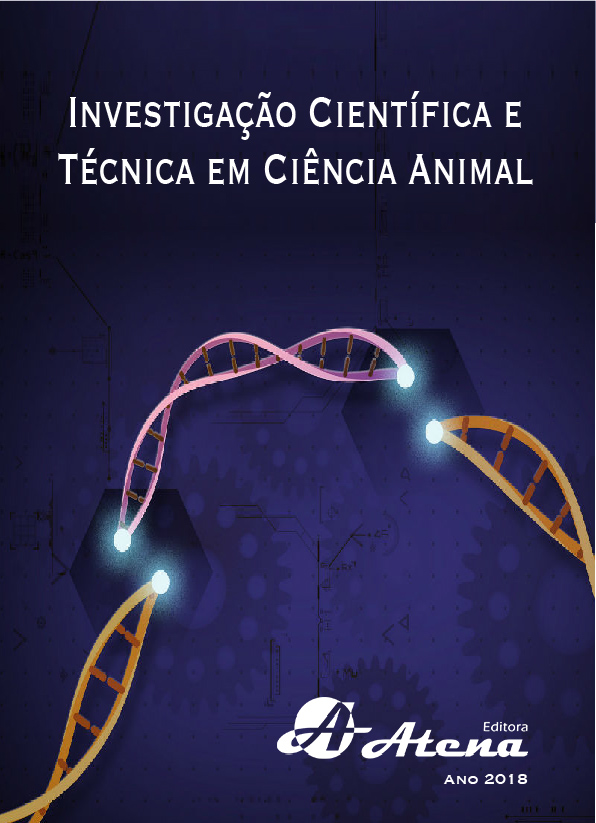
PERFIL DE PISCICULTURAS NOS MUNICÍPIOS DE TOLEDO-PR E MARECHAL CÂNDIDO RONDON-PR
A região oeste do Paraná concentra um
grande número de piscicultores, cuja atividade está
integrada em sistemas de produção familiares. Nestes
locais faltam informações atuais e consistentes sobre
a situação real das pisciculturas. Estas informações
são importantes para diversos setores da cadeia
produtiva da tilápia, desde piscicultores, produtores de
alevinos, empresas de rações, frigoríficos e até para
políticas públicas. O estudo consistiu na avaliação do
perfil de doze pisciculturas produtoras de tilápia nos
municípios de Marechal Cândido Rondon e Toledo
no oeste paranaense. Durante o ciclo produtivo de
tilápias 2014/2015, foram coletados dados in loco
com questionário semiestruturado. Observou-se
que a piscicultura é a principal fonte de receita para
41,6% dos produtores e que 100% das pisciculturas
utilizam mão-de-obra familiar. O número de tanques
escavados variou de um a oito e a média da lâmina
d’água é de 20.800m2. Mais de 83% das pisciculturas
comercializam sua produção em frigoríficos. Verificouse que o principal problema relatado pelos piscicultores
foi a comercialização e que a assistência técnica se
dá de forma irregular. As tecnologias utilizadas pelos
produtores são aeradores, alimentadores automáticos
e rações específicas para tilápia. Em relação aos
equipamentos e/ou “kits” para análise de água, 75%
dos produtores possuem estes itens, mas não realizam
amostragens frequentemente. Não foram relatados
problemas relacionados a doenças nas pisciculturas.
A produtividade média foi de 29.514 kg de peixe por
hectare de lâmina d’água por ano e os produtores
relataram satisfação na atividade.
PERFIL DE PISCICULTURAS NOS MUNICÍPIOS DE TOLEDO-PR E MARECHAL CÂNDIDO RONDON-PR
-
DOI: Atena
-
Palavras-chave: produção, tilápias, pisciculturas familiares, informação.
-
Keywords: production, tilapia, small fish farmers, information.
-
Abstract:
The western region of the Paraná State in
Brazil is home to a large number of fish farmers, whose
activity is integrated into family production systems. In
these locations there is a lack of current and consistent
information on the actual situation of the fish farms.
This information is important for several sectors of the
tilapia production chain, from fish farmers, fingerlings
producers, feed companies, slaughterhouses and even public policies. The study consisted of the
evaluation of the profile of twelve tilapia-producing fish farms in the municipalities of Marechal
Cândido Rondon and Toledo/Paraná, Brazil. During the productive cycle of tilapia from 2014 to
2015, data were collected in loco with semi-structured questionnaire. It was observed that fish
farming is the main source of income for 41,6% of the producers and that 100% of the fish farms
use family labor. The number of excavated ponds varied from one to eight and the average water
surface is 20.800 m2. More than 83% of fish farms market their production in refrigerators. It was
verified that the main problem reported by the fish farmers was the commercialization and that
the technical assistance occurs in an irregular way. The technologies used by the producers are
aerators, automatic feeders and tilapia-specific feeds. In relation to equipment and/or kits for water
analysis, 75% of the producers have these items, but do not perform samplings frequently. No
diseases related problems have been reported in the fish farms. The average productivity is 29.514
kg of fish per hectare of water surface per year and the producers reported satisfaction with the
activity.
-
Número de páginas: 15
- Ana Paula da Silva Leonel


